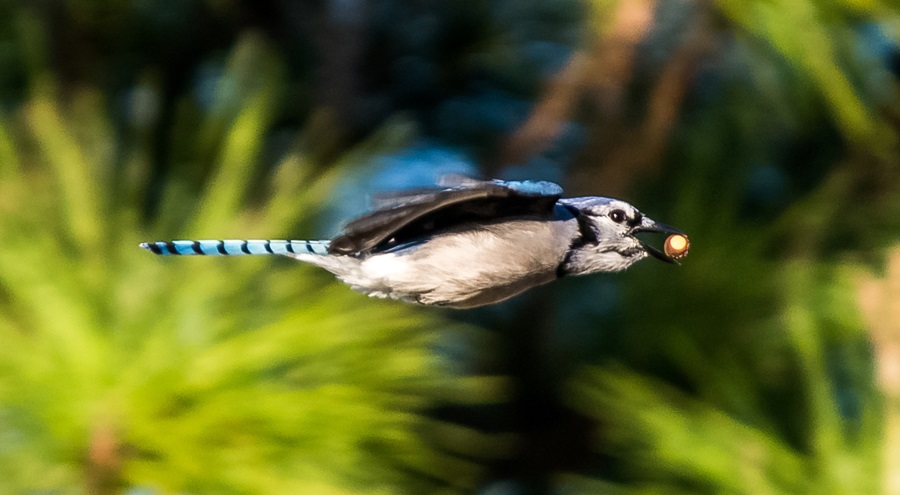It doesn’t seem possible that these hills around us were planted. We know they were clear cut; Europeans and their ships had not seen trees this size in centuries. It must have been quite a thrill to see the overstory your grandfathers told you about before your very eyes as the shorelines of Cape Cod first came into view.
But the trees were felled and the land was cleared and tilled for agriculture and animal husbandry — this was the only way the Europeans understood how to live with the land. Eventually, the soil here was so degraded of nutrients it couldn’t sustain the population, and families moved away from Cape Cod. The Cape Cod National Seashore was proposed in part because the land on the Outer Cape was so poor it was considered worthless.
The Seashore’s protections have allowed the greening up of this once-degraded area toward something like what it may have resembled in the 1500s. The great diversity of oaks now covering our landscape owes something to a secret disperser of acorns. It isn’t the wind. Over the past 30 years, our very own blue jay (Cyanocitta cristata) is largely responsible for our widespread oak forests.

You might not know of the diversity of oaks around us: the dominant species are the white oak (Quercus alba) and the black oak (Q. velutina); but we have smaller populations of bear or scrub oak (Q. ilicifolia), pin oak (Q. palustris), scarlet oak (Q. coccinea), chinkapin (Q. muhlenbergii), and swamp oak (Q. bicolor). All these oaks bear acorns, but not all are eaten by blue jays. Jays have been found to select smaller acorns when a choice is available, and they prefer certain species, particularly pin oaks and white oaks.
Blue jays are more dependent on acorns than are their cousins the crows and ravens. And they have a wonderful habit of caching or saving acorns for future use. Most of the acorns they eat or cache are collected directly from the trees rather than from the ground under a masting oak. These birds have a specialized lower bill that is shock absorbent and which they use to pound open nuts clutched between their feet. Each individual jay may consume or cache several thousand acorns each fall, according to a study on acorn dispersal published in the journal Oecologia in 1981.
Jays select and cache acorns that are uninfested with weevils and other pests. Some are cached beneath the tree where they were found, but the jays prefer to cache acorns in open areas, and those are often in a different habitat than the one where the mother tree stands. Acorns might be flown a mile from the source. The jays bury the acorns more than an inch underground, then they cover the hole with a leaf or pebble, as a gardener or plantsman might do.
We know many of the caches are collected, though no studies of cache recovery have been done with wild birds. Some are not collected, but jays are thought to have remarkable spatial memories. These selective habits of the birds and pollen analyses are the evidence scientists see for theorizing that jays are responsible for the rapid colonization of oaks after the glaciers receded.
Maybe it’s because of knowing their relationship to acorns that I’ve always been interested in blue jays here on the Outer Cape. But I’m also drawn to them for their striking plumage: salt and pepper dipped in sky blue. They’re hard to miss. A blue jay is “conspicuous by his loquicity, and the oddness of his tones and gestures,” wrote Alexander Wilson, the Scottish-American poet, ornithologist, and illustrator.
Despite being common, blue jays are so intelligent they are very hard to study. Surprisingly little is known about their demography, social lives, and breeding biology.
From published accounts, we understand the basic social unit of blue jays to be a monogamous pair that sometimes migrate. (Massachusetts birds appear to overwinter in the mid-Atlantic states, while Florida birds stay put.) They do not defend a territory the way some species do but will mob predators or intruders perhaps made up of a neighboring flock.
They travel in groups like many in the family Corvidae, and members of the groups are often related: siblings, cousins, parents, and offspring. They hunt together, play together, and alert the rest of the world of a predator’s presence. We’ve all heard the whispered scream of a red-tailed hawk far overhead, but that scream is often made by blue jays, sung perhaps to fend off competitors.
The next time you look out over these hills to admire the myriad oaks growing in your woodland, take a moment to think of the farmer who planted them.
